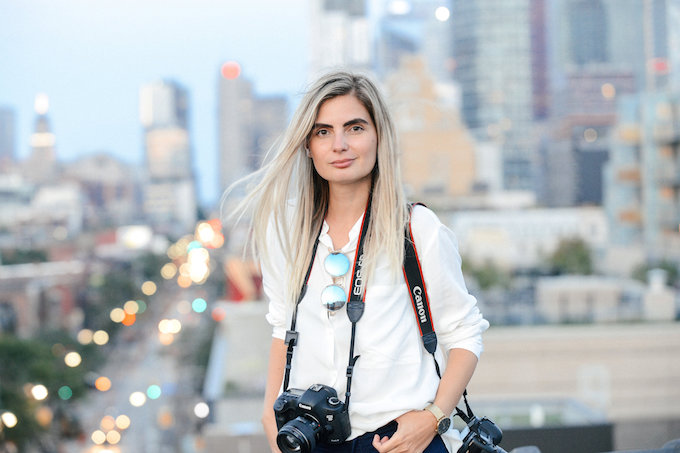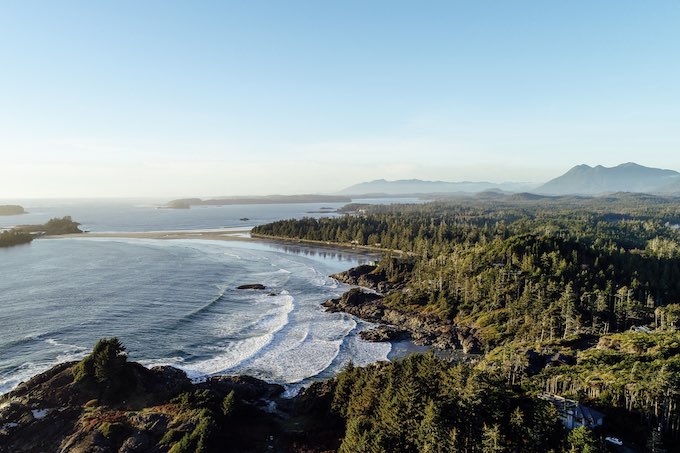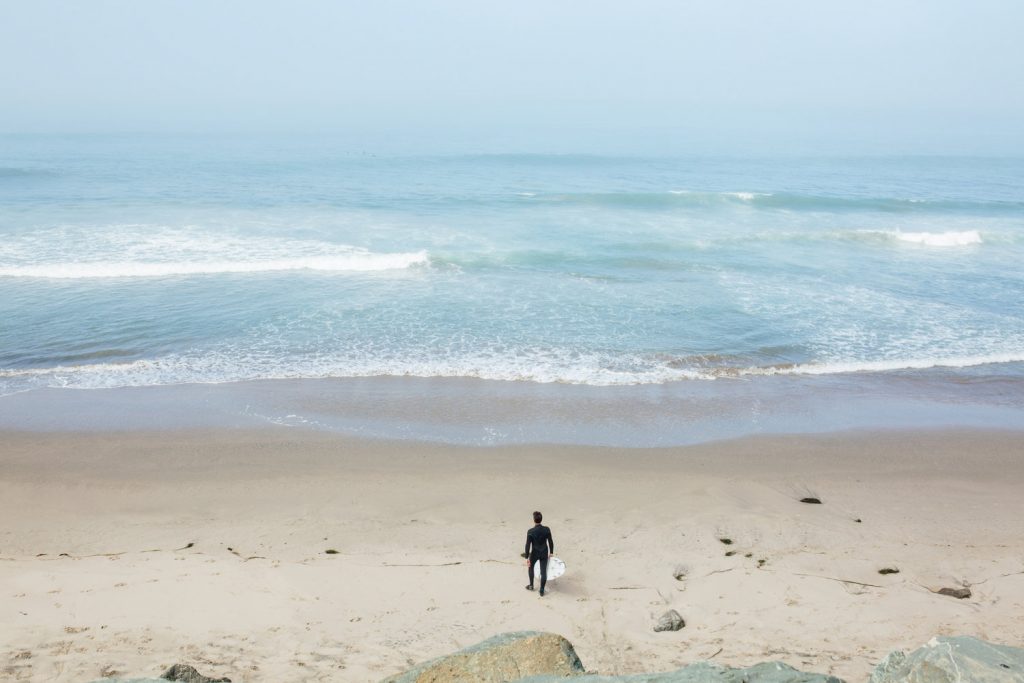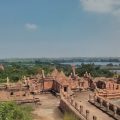From its sun-kissed beaches, spellbinding coastline, and sights as iconic as the films shot in its backyard, being picture-perfect comes all too easily to California. So when Bettina Bogar was sent on a photography assignment to Los Angeles, it’s no surprise she discovered that while the California Dream might take a lot of hard work to capture, it’s worth it.
As a little girl, Bogar used to borrow her mother’s cameras, and she would use her pocket money to develop the pictures she had taken. Although she didn’t consider photography as a career until her early twenties, Bogar would always gravitate towards other photographers, who were more than happy to share their knowledge and serve as mentors. This process allowed Bogar to master her skills and turn a passion from childhood into a pursuit for life and travel.

These days you’ll find Bogar a plane trip away from her next assignment in some beautiful corner of the world. It sounds like the dream job, swanning off to destinations, in search of the perfect shot, and maybe it is. We chatted with Bogar to find out how taking pictures all over the world has shaped the way she sees it, whether photography makes travelling more fun and why she’ll never turn down a gig by the ocean.
You travel for work often but is there a trip that’s had more of an impact on you than others?
BB: Four years ago, I was sent to Los Angeles (LA) on an assignment, and my job was to tell a story about the city’s neighbourhoods beyond the attractions. What does it feel like to wake up in one of those neighbourhoods as though you were living there?
From the person going by me on a pair of rollerskates to the woman walking her dog and the coffee shops and restaurants, I had to capture the moments that brought these spaces to life. I was living in a hotel room, working 14-hour days, discovering all these neighbourhoods in detail, and the experience opened me up as an explorer and traveller. I would walk and walk for hours, talking to everyone, listening to my gut, letting it guide me at every turn.
It was my first solo trip, and it was life-changing. It was such a meaningful and engaging way to travel alone. I formed a deep connection with California and fell in love with it. I became more intuitive as a photographer and as a traveller because of this experience.
What’s different about exploring the world through a lens and exploring it with your naked eye?
BB: For me, it isn’t different. Because in my mind, I’m always composing an image. It’s not something you can turn off, once it’s on, that’s it. But I think that when you’re exploring the world, it’s not just about looking, it’s about seeing, hearing, tasting… it’s about
creating human connections. What it feels like to be somewhere.
What advice would you give travellers that want to experience a destination, who aren’t necessarily photographers, but want to dig their heels in as you were able to in California?
BB: Stay somewhere local and talk to people. I spoke to as many people as possible in LA. Find out where the locals go to eat; those conversations are what lead to experiences. There are so many ways to find things online now but why not just talk to people instead? When you wake up in the morning, why not ask someone where they go for their coffee instead of using the Internet?
Most of the time we’re just glued to our phones, which is why I turned off my phone on a recent trip to Bali. It’s not a myth. When you switch off your phone, you do get to take in everything more and appreciate it. So, if you want an authentic experience, turn off your phone.
What are your top tips for amateur photographers who travel for pleasure?
BB: Get to know the place first. When I travel for pleasure, I don’t use my camera for the first few days. I just walk around and experience my surroundings, to understand the light, people, accents and culture. Just let it be. Inspiration needs space, and you’ll always create better images when you feel inspired. In Bali, after spending time with the locals and witnessing their deep, sincere gratitude for life, it was so moving that I couldn’t put my camera down.

Does a lens allow you to tap into a location or does it hinder you?
BB: When you’re in a place with a purpose, it lets you tap into a destination. I’m always fascinated at how locals will help you bring your vision to life. People invite you into their lives, or want to show you things because they want something to be seen or captured.
A few winters ago I had to shoot an assignment in Havana, Cuba. As our team was walking down the cobblestone streets, this lady saw us from her balcony and invited us into a museum that wasn’t open to the public. Out of nowhere, we had the most epic photo shoot location, a historic building, with balconies overlooking the streets of Havana. Cubans are some of the kindest people I’ve met – they are very proud of their heritage and keen to show it to the world.
What’s your number one tip for visiting a new place?
BB: Always have the country’s currency on you. You never know when your credit card might
What advice would you give aspiring travel photographers who want to do it for a living?
BB: Find your niche. Don’t try to be everything for everyone. Try multiple things; see what you love the most. And then give it all you’ve got. If you’re a photographer or just starting, my advice is that you reach out to the ones you look up to. And when they don’t reply, you follow up. And then follow up until they do. You have to work for it.
For photographers, travelling for a living requires extra everything.
You carry extra luggage (your equipment and personal items), you need additional insurance, and you are working with a client. There are usually crazy early call times for sunrise shoots, as well as editing (and not sleeping) on planes.
When you travel for a photography assignment, the way you explore the world is different. You aren’t on vacation, and while you may miss out on some of the things you want to do in a certain country, it’s still amazing. At the end of each trip, you still experience something new and incredible.
What’s your favourite place to take pictures?
BB: The world’s beaches and coastlines. Whether it’s the California coast, Tofino, Nusa Lembongan, Australia, or an island in the Caribbean — I gravitate towards big, open spaces. When I’m by the ocean, I feel like I can breathe more, and it’s a space that makes it easier to tap into my creativity and intuition as a photographer.

What are your travel essentials?
BB: Sunscreen, Nexus, and my Away carry-on. It fits my camera bag, so I don’t have to carry it on my back. It also has a built-in charger for my phone, which is quite nice.
How has travel shaped your day-to-day passions?
BB: Nothing inspires me more than arriving in a new place. I’ve been pretty fortunate to travel around the world quite a lot, which actually makes it quite challenging to create art from the same place. The travel bug is a real thing, once you get it, you cannot be cured.
If you could take a tour anywhere in the world, where would you go and what would you do?
BB: The next country on my list is New Zealand. I’ve been admiring New Zealand for quite some time and on my recent travels to Indonesia, I made a dear friend, who introduced me to a little of New Zealand’s culture. Possibly a wine tour, I’m also obsessed with wine from New Zealand, and currently taking a pretty extensive wine-course, where I’ve learned a lot about the country and its wine-making techniques. I would love to go to Marlborough, Waiparah Valley, and Hawke’s Bay.



